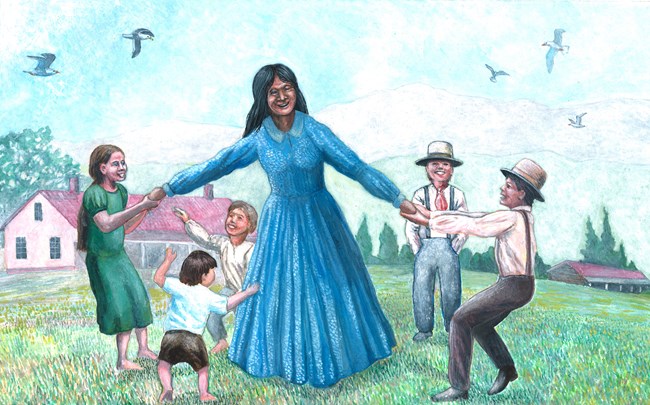
Michael Ward
Karana’s tale in Island of the Blue Dolphins ends when she sails from the island to the California mainland. The real Lone Woman also left San Nicolas Island after 18 years of isolation.
This woman, the historical model for Scott O’Dell’s Karana, left the island in late summer 1853 on a schooner belonging to George Nidever. He had come to San Nicolas Island to hunt sea otters with a group of seven men, four of whom were Native Americans. We know details about their stay on the island and the Lone Woman’s life in Santa Barbara from Nidever, fellow otter hunter Carl Dittman, and other sources.
When Nidever and his hunting crew set sail for the mainland with the Lone Woman, after a month of hunting sea otters, they encountered a storm and took shelter near Santa Cruz Island. When the storm passed, they continued their voyage to Santa Barbara and arrived there on Sept. 1, 1853.
Many townspeople greeted them as they anchored the ship in the harbor, including one of Nidever’s sons, who was riding on horseback. The Lone Woman was surprised by the horse because she had never seen an animal of that kind. She accompanied Nidever to his adobe house and lived with his family until her death seven weeks later. The primary language of the Nidever household was Spanish.
During her time with the Nidever family, the Lone Woman had many visitors, including Mission Santa Barbara priest Father González Rubio. A number of Chumash and Gabrielino people also visited the Lone Woman and attempted to communicate with her in their languages. According to interviews given by otter hunters Nidever and Dittman, no one who met with the Lone Woman spoke her language, so communication occurred mainly through “signs,” or non-verbal language.
The Nidever family was happy to have the Lone Woman in their home. However, not long after her arrival, the Lone Woman became gravely ill. Her decline may have been caused by a change in diet, contaminated food that brought on dysentery, exposure to diseases, or injury. On October 19, 1853, when she was near death, the Lone Woman was conditionally baptized by Father Francisco Sánchez at the request of María Sinforosa Nidever, George Nidever’s wife. The priest gave her the baptismal name of Juana María in the Santa Barbara Presidio burial registry.
The Lone Woman died soon afterward and was buried in the Mission Santa Barbara cemetery. The exact site of her burial has not been confirmed (many Indians were interred in unmarked graves), but there is a plaque at the east end of the mission cemetery that commemorates her. It was dedicated in 1928, by the Daughters of the American Revolution.
Last updated: June 8, 2025
